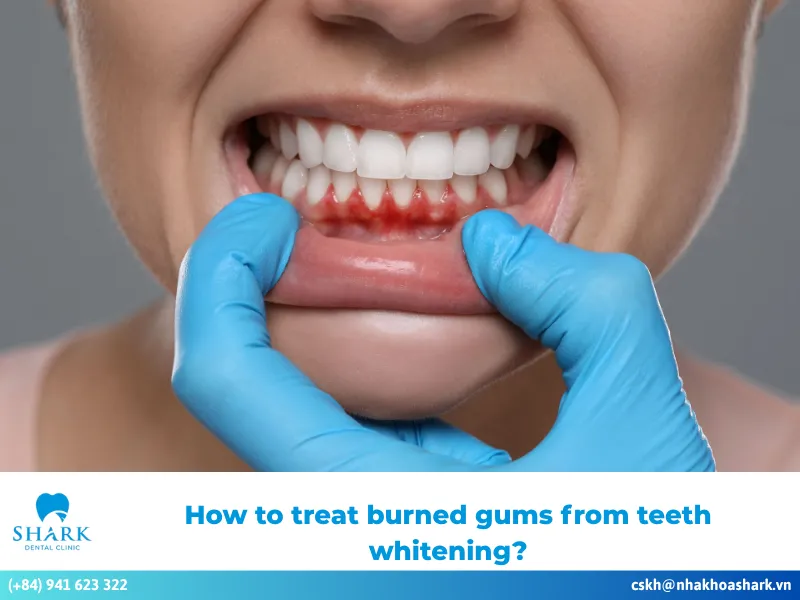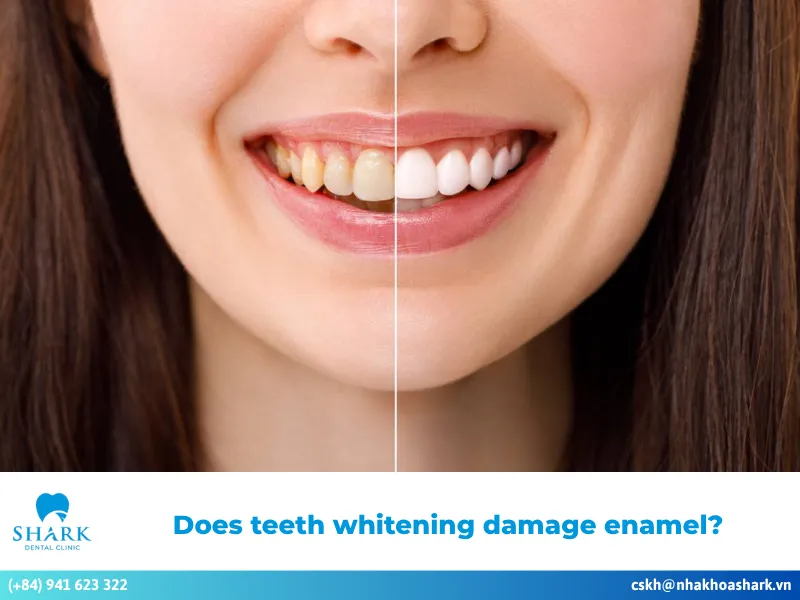Using baking soda for teeth whitening is a popular home remedy that many people have successfully applied. However, not everyone understands the pros and cons of whitening teeth with baking soda or how to do it safely and effectively. Let’s explore the details in the following article to find out the answers!
How does baking soda whiten teeth?
Baking soda, a white salt primarily composed of sodium bicarbonate, is known for its ability to absorb moisture, dissolve slightly in water, and effectively neutralize acids. These properties contribute to its fast and effective teeth-whitening effects.
However, because of its strong acid-neutralizing capacity, using baking soda in excessive amounts or for prolonged periods can lead to enamel erosion, increasing the risk of tooth decay and pulp inflammation. Therefore, it is essential to consult a dentist or dental specialist to determine the appropriate amount of baking soda that is safe for use.
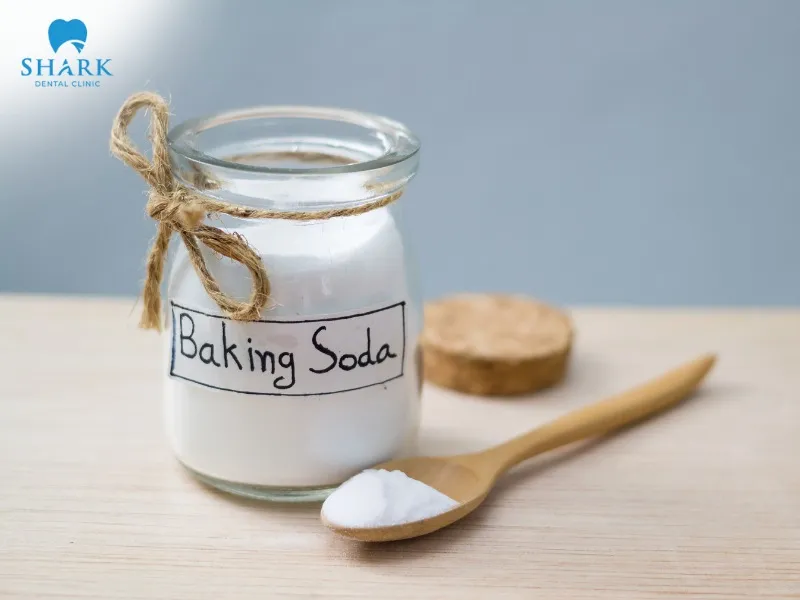
Benefits of using baking soda to whiten teeth
Baking soda is a well-known ingredient for many people in Vietnam, renowned for its efficacy in cleaning yellow stains. Here are some key benefits of using baking soda for teeth whitening:
- Removes yellow stains and plaque: Baking soda effectively breaks down stubborn yellow stains on the tooth surface caused by factors such as frequent coffee consumption, smoking, or drinking carbonated beverages. Its mild abrasive nature helps eliminate plaque buildup, resulting in whiter and more evenly colored teeth.
- Neutralizes acids and prevents bacterial growth: Baking soda’s mild alkaline properties help neutralize acids in the oral cavity. When used correctly, in moderate amounts and under a dentist’s guidance, it helps prevent bacterial growth, thereby reducing the risks of tooth decay, gingivitis, and bad breath.
- Simple, time-saving, and convenient whitening method: Whitening teeth with baking soda is straightforward and requires no complicated tools or devices. It takes little time and can easily be done at home.
- Eliminates bad breath: Thanks to its strong acid-neutralizing capability, baking soda not only cleans the oral cavity but also removes sulfur compounds that cause unpleasant odors, helping you maintain fresh breath.
- Balances PH levels in the mouth: An acidic oral environment contributes to enamel erosion and creates ideal conditions for bacteria to thrive, leading to infections. Using baking soda, which has natural alkalinity, helps balance pH levels and effectively protects tooth enamel.
In summary, using baking soda for teeth whitening provides several noticeable benefits: it helps whiten and brighten teeth, is easy to use, saves time and cost of teeth whitening. If you want to achieve a bright, confident smile quickly, consider incorporating this simple method under the guidance of a dental specialist for safe and optimal results.
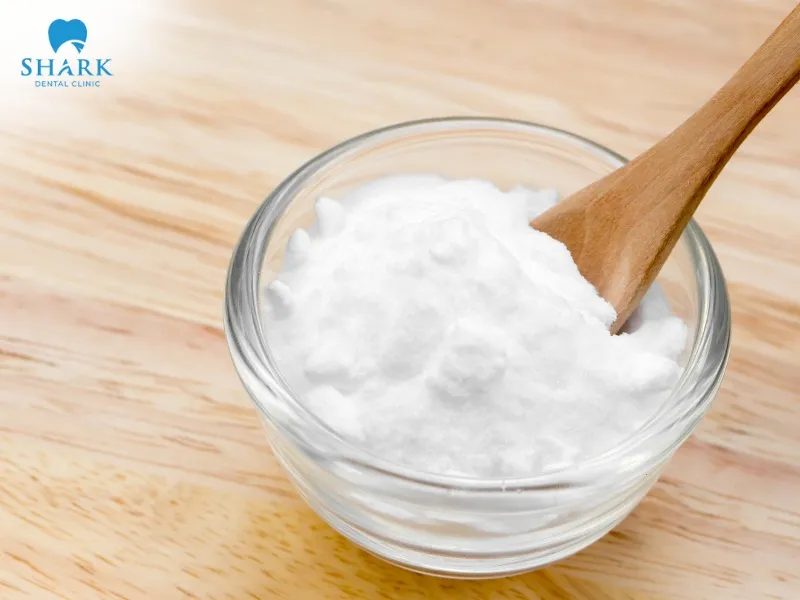
>>> See more: Dental bleaching in Vietnam
Pros and cons of using baking soda to whiten teeth
Using baking soda for teeth whitening offers several benefits:
- Effectively removes plaque and bacteria: Baking soda can break down plaque buildup on the tooth surface, helping to eliminate bacteria in the oral cavity. This reduces the risk of tooth decay, gingivitis, and periodontitis.
- Safer than fluoride-based products: Whitening and cleaning teeth with baking soda is generally considered safer than using products containing fluoride compounds.
- Affordable and easily accessible: Baking soda is inexpensive and widely available in stores and supermarkets, making it convenient to buy and easy to use. This is one of the main reasons why it is popular and well-reviewed by many customers.
However, there are some limitations to using baking soda for teeth whitening that you should be aware of:
- According to the American Dental Association (ADA), baking soda is considered safe for tooth enamel. However, excessive or prolonged use can lead to enamel erosion.
- Baking soda has a salty taste, which may cause discomfort for some people. It can also create a gritty sensation in the mouth while brushing.
- Baking soda only supports cleaning and whitening but is less effective in preventing tooth decay compared to products that contain fluoride.
Based on these pros and cons, carefully consider which teeth whitening method is best for you. It’s advisable to consult a dentist before whitening your teeth to ensure both safety and optimal results.
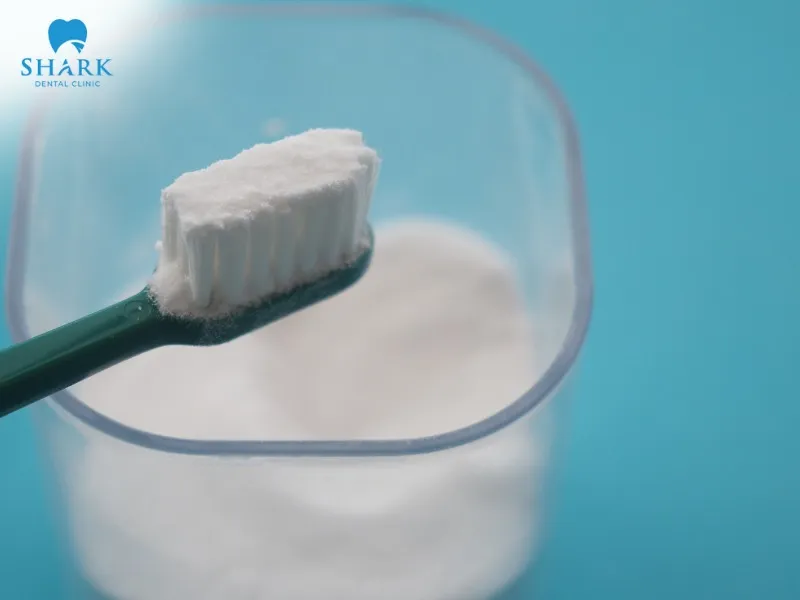
How to use baking soda to whiten teeth effectively
Here are several methods to whiten teeth using baking soda:
Baking Soda and Vinegar
- Step 1: Mix 1–2 teaspoons of baking soda with 1 teaspoon of vinegar and 1 teaspoon of salt.
- Step 2: Dip your toothbrush into the mixture and brush thoroughly, focusing on the tooth surface and any yellow or stained areas.
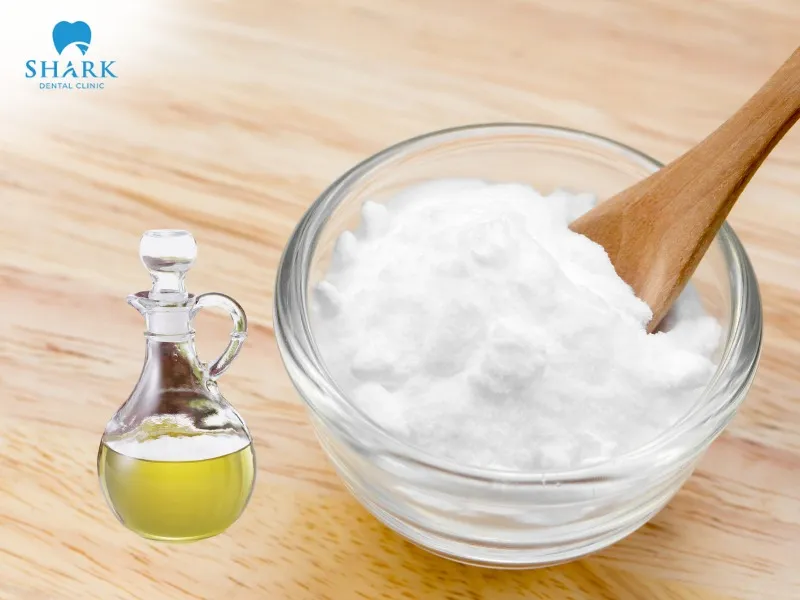
Baking Soda and Lemon
- Step 1: Mix baking soda with lemon juice to form a smooth paste.
- Step 2: Brush your teeth with this mixture or let it sit on your teeth for a short time.
- Step 3: Rinse thoroughly with warm water, as lemon juice can cause temporary sensitivity.
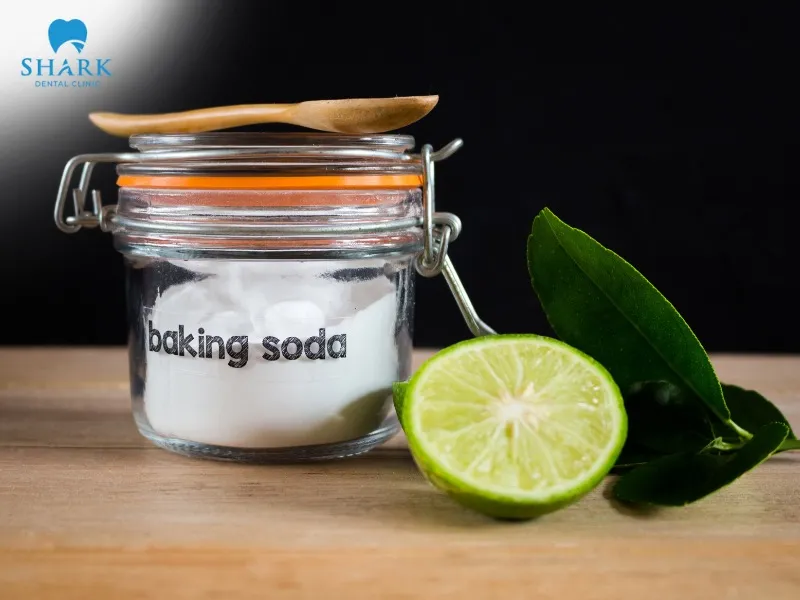
Baking Soda and Toothpaste
- Step 1: Take a small amount of toothpaste and mix it with two teaspoons of baking soda.
- Step 2: Dip your toothbrush into the mixture and brush all tooth surfaces for about 2–3 minutes.
- Step 3: Rinse your mouth with clean water or a mouthwash solution.

Baking Soda and Strawberries
- Step 1: Mash strawberries, which contain antioxidants and malic acid beneficial for whitening teeth, and mix them with one teaspoon of baking soda.
- Step 2: Apply the strawberry-baking soda mixture evenly across your teeth and gently brush for 4–5 minutes.
- Step 3: Rinse your mouth thoroughly with water to remove any remaining ingredients.
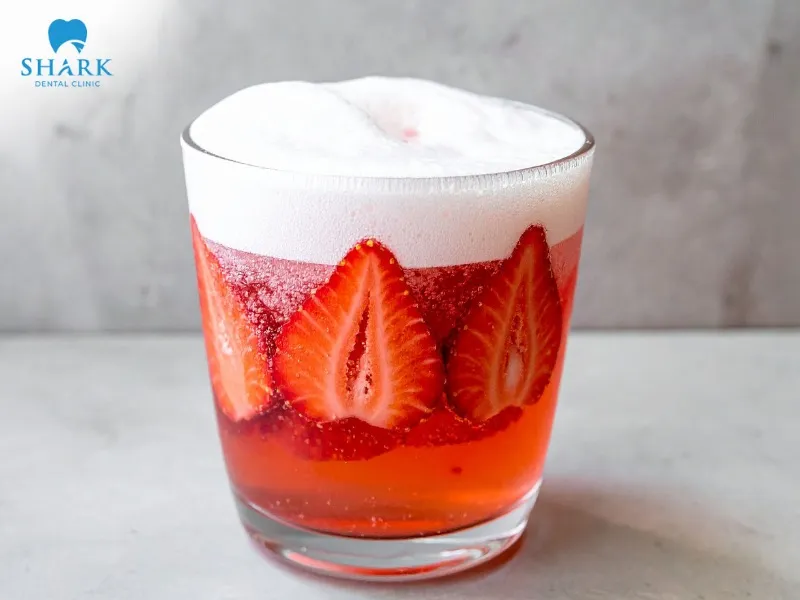
Baking Soda and Water
- Step 1: Mix baking soda and water in a 1:2 ratio, stirring well until the mixture becomes a smooth paste.
- Step 2: Wet your toothbrush, dip it into the mixture, and gently brush your teeth.
- Step 3: Relax for about 15 to 20 minutes, then rinse your mouth thoroughly with clean water.

Baking Soda and Aluminum Foil
- Step 1: Mix baking soda and water until a smooth, consistent paste forms.
- Step 2: Heat a pan, add one spoon of salt, and stir until warm.
- Step 3: Spread aluminum foil on a flat surface, then pour the baking soda mixture and the heated salt on top.
- Step 4: Place the foil over your teeth and leave it for about 5 to 7 minutes. After removing the foil, rinse your mouth with water.
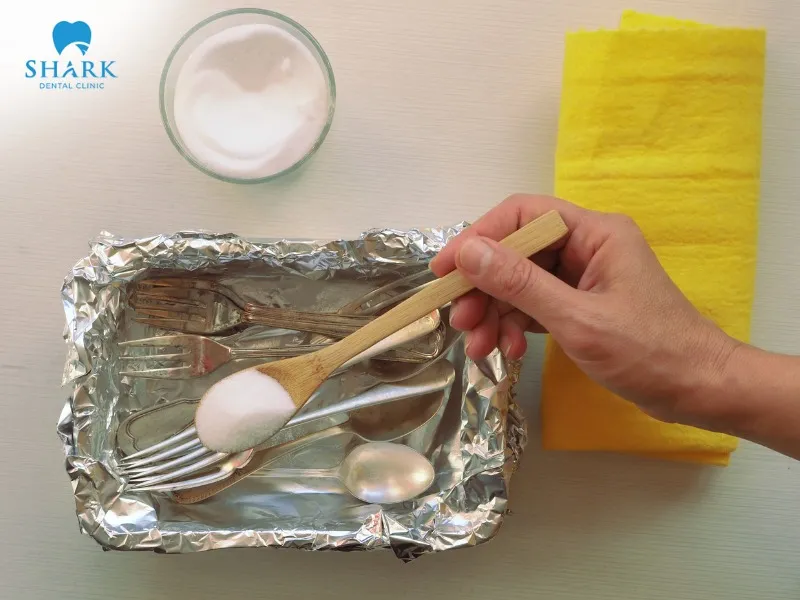
Baking Soda and Coconut Oil
- Step 1: Coconut oil has a smooth texture and contains lauric acid, which helps reduce inflammation and promotes healing. Mix baking soda and warmed coconut oil in a 1:1 ratio.
- Step 2: Dip your toothbrush into the mixture and gently brush all surfaces of your teeth.
- Step 3: Since coconut oil tends to adhere to the mouth, rinse thoroughly with a specialized antiseptic mouthwash.
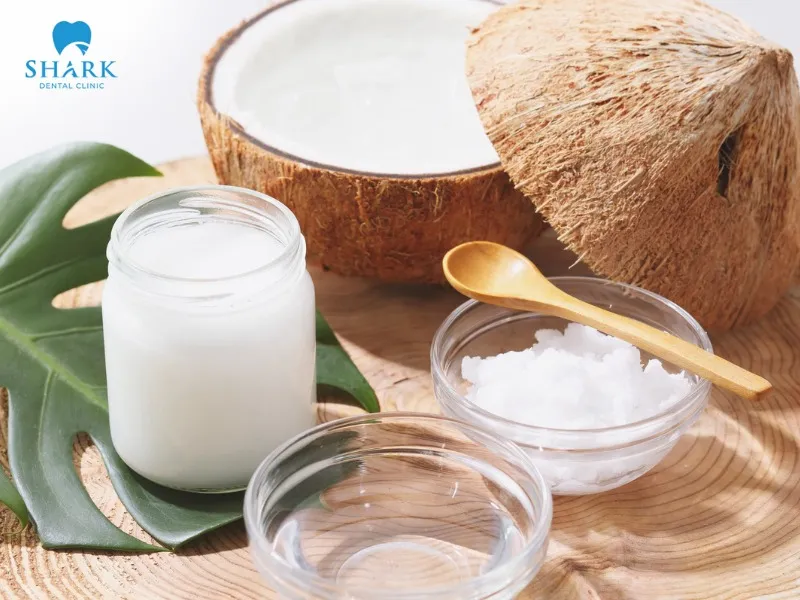
Each baking soda whitening method has its own benefits and risks. These are simple, cost-effective whitening approaches that often yield noticeable results when used correctly.
Can you use any kind of baking soda to whiten your teeth?
Currently, there are various types of baking soda on the market, each designed for specific purposes. It’s essential to choose the right kind of baking soda for teeth whitening. Here’s a breakdown of the different types:
- Food-grade baking soda: This type is commonly found in grocery stores and supermarkets, labeled “for food use.” It is primarily used for baking and cooking and is not specifically intended for dental care. While it is not harmful, it is less pure and not formulated for teeth whitening.
- Medical-grade baking soda: This type consists of baking soda with high purity levels often employed in medical and dental applications, such as in mouth rinses, antacids, or dental products. It is the safest option for teeth whitening and is recommended for use under a dentist’s supervision.
- Cleaning-grade baking soda: Formulated for household cleaning, this type is intended to remove stains, deodorize, and polish surfaces. It may contain strong additives and should never be used on teeth, as it can damage enamel and irritate gums.
- Baking soda in toothpaste: Many modern toothpaste brands now include baking soda as a whitening agent. The concentration of baking soda in toothpaste is carefully adjusted to ensure safety and effectiveness, helping to whiten teeth and freshen breath without harming enamel.
In summary, while there are various types of baking soda available, you should only choose products that are specifically recommended for oral use. Always consult your dentist before using baking soda for teeth whitening to ensure that the method is safe and suitable for your dental condition.
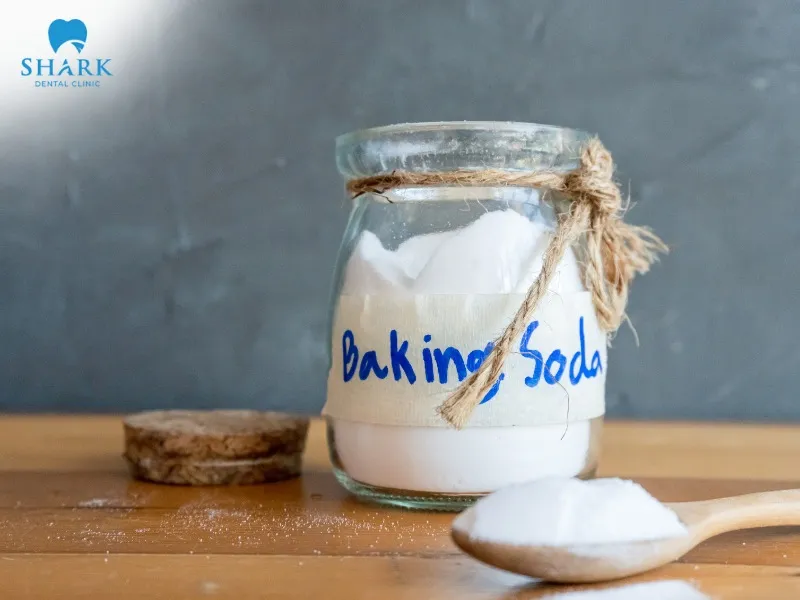
This information outlines how to use baking soda for teeth whitening, along with its advantages and disadvantages. Baking soda remains a popular and affordable whitening ingredient, widely used to achieve brighter, cleaner teeth. We hope this information has provided you with helpful insights to effectively remove yellow stains and restore a confident, radiant smile.







